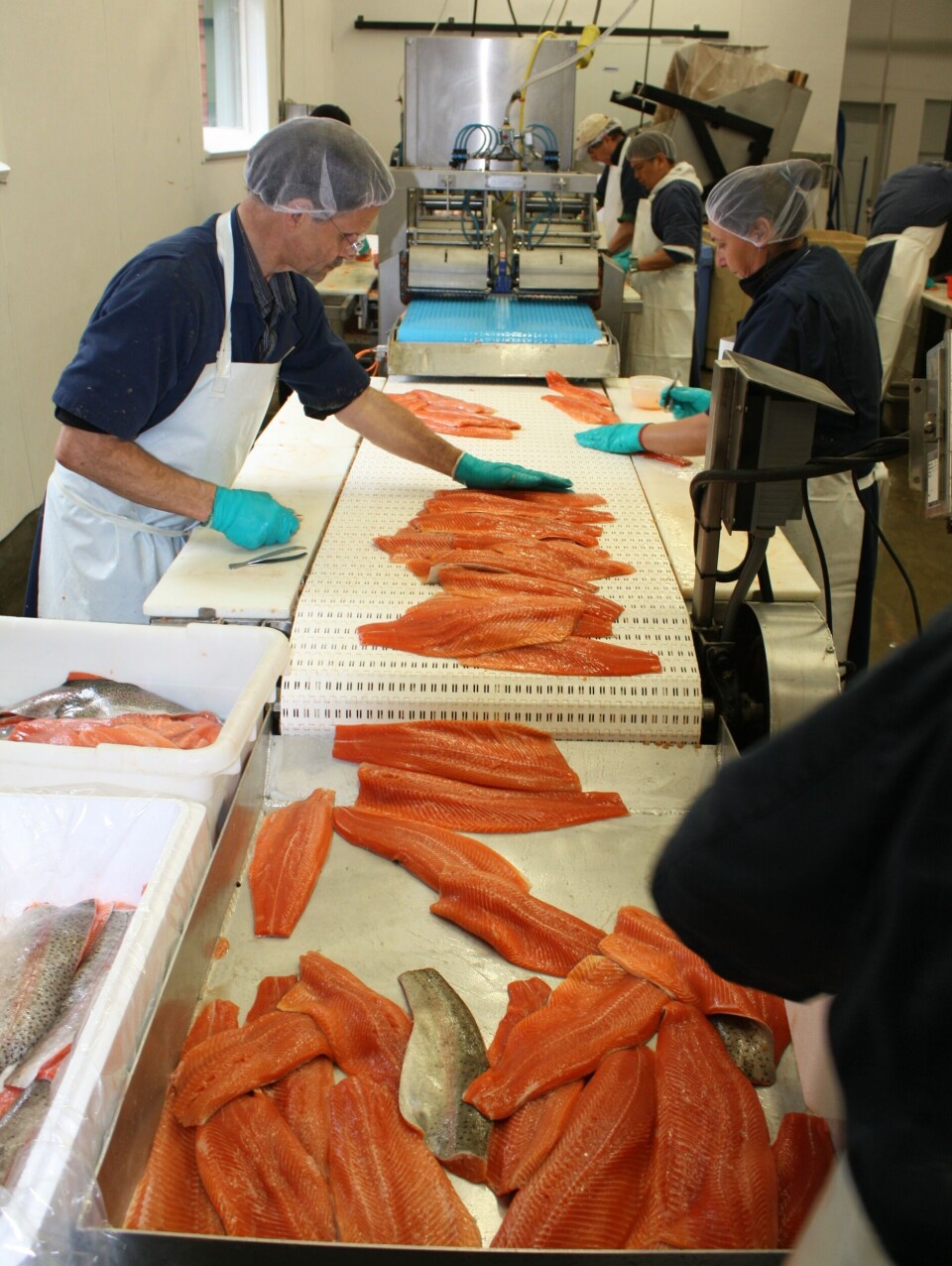
Virus eradication not an option
European governments originally tried to eradicate the ISA virus after it was first found to affect farmed Atlantic salmon, but after realizing that the bug was endemic in the environment, a strategy of managing the impact of the virus through a combination of prevention and improved husbandry is being adopted on an increased scale. But environmentalists are all too eager to exploit the latest news about some ISA- implicated fish being processed for human consumption, while at the same time being busy cooking their chicken and hamburgers to a crisp in order to avoid being contaminated by salmonella and other commonly found bugs in these products. And when preparing potatoes for the making of fries to go with those burgers, consumers think nothing of peeling away spots of dark matter caused by some form of disease.
The Canadian Broadcasting Corporation (CBC) has the latest news from the Canadian East Coast and an incident of a naturally occurring fish health situation;
The Canadian Food Inspection Agency has determined it cannot eradicate infectious salmon anemia in Atlantic waters, leading officials to start stressing the importance of preventing the deadly virus. Last summer, infectious salmon anemia (ISA) was discovered at an aquaculture site near Liverpool, N.S. Two cages at the Nova Scotia aquaculture site, which contained smaller salmon, were immediately destroyed. However, 240,000 fish that were close to market size were allowed to continue growing. Those fish are now being processed for sale at Cooke Aquaculture's plant in Blacks Harbour, N.B. The decision to allow fish, which are positive for infectious salmon anemia, to remain for half a year in their cages and then to be transferred to a different province for processing, points to a change in CFIA policy. The virus has been found in Nova Scotia, New Brunswick and Newfoundland and Labrador.
Patricia Ouellette, a regional program officer with the Canadian Food Inspection Agency, said the discoveries have caused inspectors to determine they can't erase the disease by having fish destroyed. "At first, the focus was on eradication of the disease,” Ouellette said. "We've shifted gears to preventing the spread of the disease and no longer consider eradication as an option." The CFIA says there are no treatment options available for the virus, but a vaccine is available to prevent the disease. Ouellette said infectious salmon anemia poses no threat to humans, only to other fish. She said the agency ensures measures are taken to prevent further spreading of the disease during transportation and processing.
According to the CFIA, up to 90 per cent of infected fish can die of the disease, depending on the strain of the virus. The types of fish that have been confirmed to be susceptible to the virus are: Atlantic herring, Atlantic cod, Atlantic salmon and brown trout. Fish with the disease may have a loss of appetite or show abnormal swimming patterns and they may have grey gills, a swollen abdomen, according to the federal agency. The virus can spread in contaminated water or by contaminated equipment.






















































